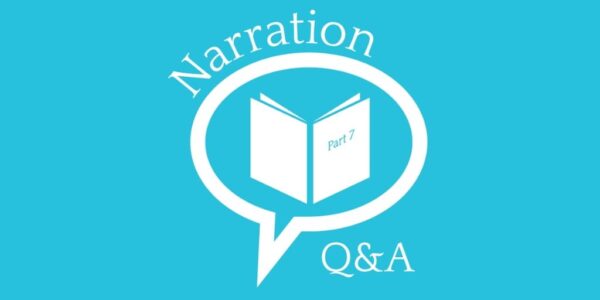Free shipping on USA orders over $129!


So far in our Narration Q & A series, we’ve talked about the reason we use Charlotte Mason’s method of narration and how it cements the material in the student’s mind; we’ve discussed what narration is and how to get started with it, how long of a passage to read and how many times to read it; we’ve looked at techniques we can use to set our students up for success in their narration lessons and considered how long or short their narrations should be.
But we all know that no matter how great the book is or how carefully we pave the way for a good narration, sometimes mistakes are going to happen. We and our children are human. Maybe your daughter isn’t feeling well and she leaves out a key point. Or maybe your son stayed up too late the night before and his brain is having a hard time getting going and he mixes everything up in his narration. How do we handle situations like those?
Today let’s take a look at what to do with mistakes and omissions.
Narration Question #18: What do I do if my child narrates back with incorrect information, especially on something like a Bible narration?
As a teacher, our role is to be a guide. Part of a guide’s job is to make sure you’re heading the right direction. If you took the wrong path and the guide didn’t say anything, he wouldn’t be a very good guide.
We may need to correct a student’s narration mistake at times. Charlotte gave specific instruction for that situation: “Corrections must not be made during the act of narration, nor must any interruption be allowed” (Vol. 6, p. 191).
So, yes, correct any incorrect points when necessary, but wait until the end of the narration. Don’t interrupt.
Narration Question #19: What do I do if my child is narrating things out of order?
Often beginning narrators struggle with remembering the sequence of events. They may need some guidance to help them get into the habit of narrating in order. I once saw a video of a masterful Charlotte Mason-trained teacher demonstrate how to gently guide the narration to be given in order, yet she didn’t stifle the students or overly direct them. She simply helped them focus on the various aspects of the passage in the correct order. It was almost like moving a spotlight to the different segments of the story to highlight the order.
You could follow her example by reading the passage, then saying something like, “Let’s start with the first thing that happened and go from there. First, so-and-so arrived at such-and-such. Tell me about that.” Allow the child to tell what he remembers about that part, then direct his attention to what happened next: “Good. After that, so-and-so did such-and-such. What do you recall about that?” And continue in that manner, guiding the student through the chain of events in order. As he gains more practice, you might ask him to move the mental spotlight for himself occasionally, “And what happened next after that?,” to see how he is progressing in this skill of retelling in order. Keep gently guiding the process until it becomes a habit.
Narration Question #20: How to encourage more indepth/detailed narration without “digging it out of them”? We’ve been narrating for 4 years now and I don’t feel like I am getting good narrations from them. I get “She went to that place and saw him.” I can get a sentence or two out of a reading. I know that they know more than that.
It sounds like you may be dealing with a habit of carelessness. I would recommend you take steps to reestablish the good habit of doing a thorough job. Here are some practical tips. During a neutral time (not directly at the end of one of their abbreviated narrations) have a short talk. Something as simple as, “I expect your narrations to be more thorough. When you retell something it helps to cement it in your own mind. So from now on, I want you to work hard at remembering and retelling what we read.”
During the next narration lesson, if you get the usual cryptic response, give them a firm yet pleasant look as you say, “I’m sure you know more than that.” Then be prepared to sit quietly, with an expectant and encouraging look on your face, until they give you more. It may help to use the key words technique (described in the answer to Narration Question #11), offering them practical assistance as they put forth the effort to form the habit of thoroughness. As with other habits, you may also need to use the motivation of natural consequences. You could schedule the narration lesson immediately before an event they enjoy very much. If you have to spend too much time waiting for a thorough narration, they miss the enjoyable event.
The main point is that the more often they give you a meaningless narration, the more that will become a habit. You want to motivate them to form a habit of thoroughness instead.
Narration Question #21: What do I do if my child leaves out a key point in a narration?
This situation sounds more like a once-in-a-while inadvertent omission, rather than a habit. In that case, you might chime in with a narration of your own and include the student’s omitted point in yours. Or you might bring up that point in a discussion question. Discussion questions are great tools to use after the narration.
We’ll talk more about discussion questions—when to use them, how to word them, and what their purpose is—next time.
